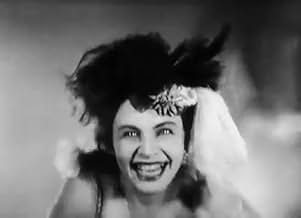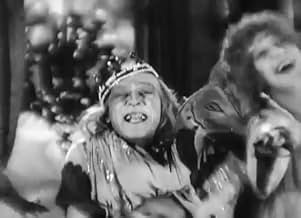Aggiungi una trama nella tua linguaIn the beginning of the industrial revolution, the Paris Commune was established in 1871 against the rich and the powerful, and violently repressed by the army that remained faithful to a ta... Leggi tuttoIn the beginning of the industrial revolution, the Paris Commune was established in 1871 against the rich and the powerful, and violently repressed by the army that remained faithful to a tamer form of Republicanism. How could the love story between a young sales girl and a soldi... Leggi tuttoIn the beginning of the industrial revolution, the Paris Commune was established in 1871 against the rich and the powerful, and violently repressed by the army that remained faithful to a tamer form of Republicanism. How could the love story between a young sales girl and a soldier unable to decide if he was pro or against the radical fashion? Two short months were ne... Leggi tutto
- Regia
- Sceneggiatura
- Star
- Commune's Central Committee member
- (as A. Arnold)
Recensioni in evidenza
It's the last great triumph of pure, silent, Soviet Academician, handling all the pieces of theory brilliantly: the theory of types, in which the actors are chosen for appearance, the quick cuts, the Dutch angles, and, of course, the propaganda as co-written, co-directed and almost certainly co-edited by Grigoriy Kozintsev and Leonid Trauberg. The Commune was long cited as a precursor of the November Revolution, doomed to fail because the groundwork had not been laid in educating the masses; as some one said to me in an effort to be witty, "The lumpenproletariat was too lumpy." I told him he was half-right. No one lies like he lies to himself about his own motives and his heroes. And then, he tells those lies to others, believing them the truth.
This is the power of film, particularly silent film, of any immersive art which requires the audience to fall under its spell: it creates its own world through its story and images, and if you accept it, you live in that world, for at least its length. If you come out of it, and think it is great art, then you remain under its spell, and its world remains, at least in part, reality for you.
Yet art attempts to make sense of an immense world, it tries to create narratives that make sense, invents heuristics that explain what is happening. And because the universe is vast, and humanity is small, and this movie is 93 minutes in length (the version I saw; the IMDB lists its original running time as two hours), then it is false.
Devine decadence rules in Paris with its attention to materialism and coarse joie de vivre. The haves are enjoying a grand time while the have nots struggle to survive. When the Prussians march on the city the uppercrusts bolt for Versailles, leaving the beleaguered city's defense to the workers to defend. With the threat dissipated the workers demand more rights, the bourgeois see it otherwise by turning the military on them. A stand-off ensues and a civil war erupts.
Babylon's revolutionary fervor was certainly right for the period with it being released a month after the Stock Market Crash in 1929. Emboldened with Eisenstein montage it shouts out its message with a ham fisted juxtaposition and simplicity that may have stirred the proles in 1917 but comes across dated here with the upper class caricatures no different than Griffith's Union troops in black face in his Civil War whitewash. Both remain triumphs of form over content (racism, totalitarianism) that should be be relegated to the dustbin of history,
Two Ukrainian filmmakers, Grigori Kozintsev and Leonid Trauberg produced cinema's first movie on the movement, March 1929's "The New Babylon." The motion picture focuses on Louise (Elena Kuzmina), a saleswoman in a Paris' wholesale store called 'The New Babylon.' She gets swept up in the Commune's passions, even though her boyfriend is a soldier in the French Army and is fighting against the Commune.
What's fascinating about "The New Babylon" is the framing of Louise and her boyfriend's scenes. Using film director John Ford's technique of filling the backgrounds with activity while focused on the main characters in the foreground, Kozintsev and Trauberg aroused the viewers' attention with such framing. In addition, the pair use a variety of trick photography, special effects and double/triple exposures to emphasize the complexity of the Commune's situation.
The two filmmakers in 1922 formed the 'Factory of the Eccentric Actor' (FEKS), which concentrated on live theater before morphing into cinema. Basing both their stage plays and films on the experimental and the avant-garde variety, each film was unique in its subjects: comedy, political tracts, musicals, etc. FEKS' purpose was to take away the constraints from theater, film, circus, music and opera and use a combination of all of them to present an unusual visual experience. The pair were influenced by D. W. Griffith's stylization and Charlie Chaplin's surreality. Employing Soviet composer Dmitri Shostakovich to write his first musical accompaniment for cinema, the two filmmakers produced a unique viewing experience which is thankfully preserved.
As film critic Matt Bailey succinctly noted, "The film has all of the vigor and pure cinematic originality of Abel Gance's Napoleon without all the pretensions to greatness shouldered by that film."
The setting itself is a fresh and interesting one, for once an ideological Soviet film is not set during 1917. However, since the depicted time period is that of international mayhem and confusion, the viewer who sits in cold, without first reading a little background, may have trouble understanding the context. Also the first half of this film, which is quasi-episodic in nature, is difficult to follow because of the artistic choices implemented by Kozintsev and Trauberg. The same problem can be found in their earlier adaptation of Gogol's "The Overcoat" called "Shinel" (1926), which also had trouble concentrating on the essential.
However the viewer would be wise to stick with the film, as the second half clarifies much, and as a narrative is much more interesting. Even the editing and cinematography improve during the most distressing sequences. The political message becomes clearer to read, to a point where the film-makers literally spell it out for you. The imagery is very vivid and thought-provoking, and the film that started out as a curiosity with a period setting ends up touching upon several ageless themes and questions.
Lo sapevi?
- QuizComposer Dmitri Shostakovich wrote his first film score for this silent movie. He hurriedly wrote about 90 minutes of music.
- ConnessioniEdited into Histoire(s) du cinéma: Une histoire seule (1989)
I più visti
Dettagli
- Tempo di esecuzione2 ore
- Colore
- Mix di suoni
- Proporzioni
- 1.33 : 1
Contribuisci a questa pagina





























